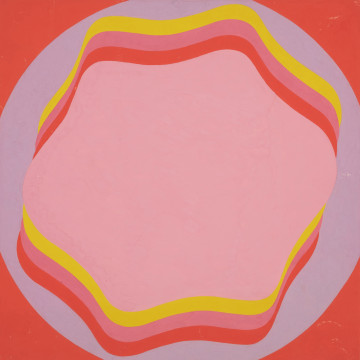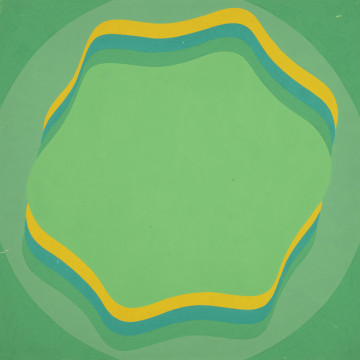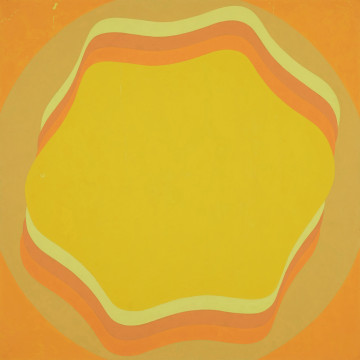
Painting
1969
National Museum in Szczecin
Part of the collection: Post-avant-garde and progressive art
Wstęga IV (1969) by János Fajó, one of the most important contemporary Hungarian artists, is one of four works from this series in the collection of the National Museum in Szczecin. The fundamental elements of his works include basic forms (circle, triangle, square) and colours (yellow, blue, red), which the artist creates by simplification, reducing shapes observed in nature to geometric forms and their variables. At the same time Fajó used exceptionally rich colour palette. A characteristic element of his works are streamlined shapes, but also large, regular areas of pure colour. He experimented with form, colour, plane and space, checking how they influenced each other, as well as the viewer's perception. His projects and works feature symmetry, asymmetry, as well as variations in movement, rhythm and dynamism. The works from the Wstęgi series, painted precisely in lively, vibrant colours, refer to optical art and new geometry.Fajó started creating in the 1960s, a time of dynamic development of neo-avant-garde trends, including the development of the new wave of Hungarian constructivism, which was shaped by the influences of hard edge art, minimal art, and colour-field painting. Like many of his contemporaries, who rejected socialist realismrejected socialist realism, Fajó referred to modernist abstractionists – Lajos Kassák, Victor Vassarely, Max Bill. He has been involved in creating and running independent groups and art venues – the most important being Budapest Studio and the Józsefváros Gallery. He was involved inpublishing, exhibition and educational activities. He ran art summer schools (Lucky Free School) and taught at the Hungarian Academy of Applied Arts. Fajó professed artistic freedom and the need to democratise art. Like his master Kassák, he believed that art created for the ‘collective individual’ was the way to achieve balance and harmony in social reality.
Marlena Chybowska Butler
Author / creator
Dimensions
cały obiekt: height: 51 mm, width: 50 mm
Object type
painting
Creation time / dating
Creation / finding place
Identification number
Location / status

1969
National Museum in Szczecin

1969
National Museum in Szczecin

1969
National Museum in Szczecin
DISCOVER this TOPIC
Museum of King Jan III's Palace at Wilanów
DISCOVER this PATH
Educational path